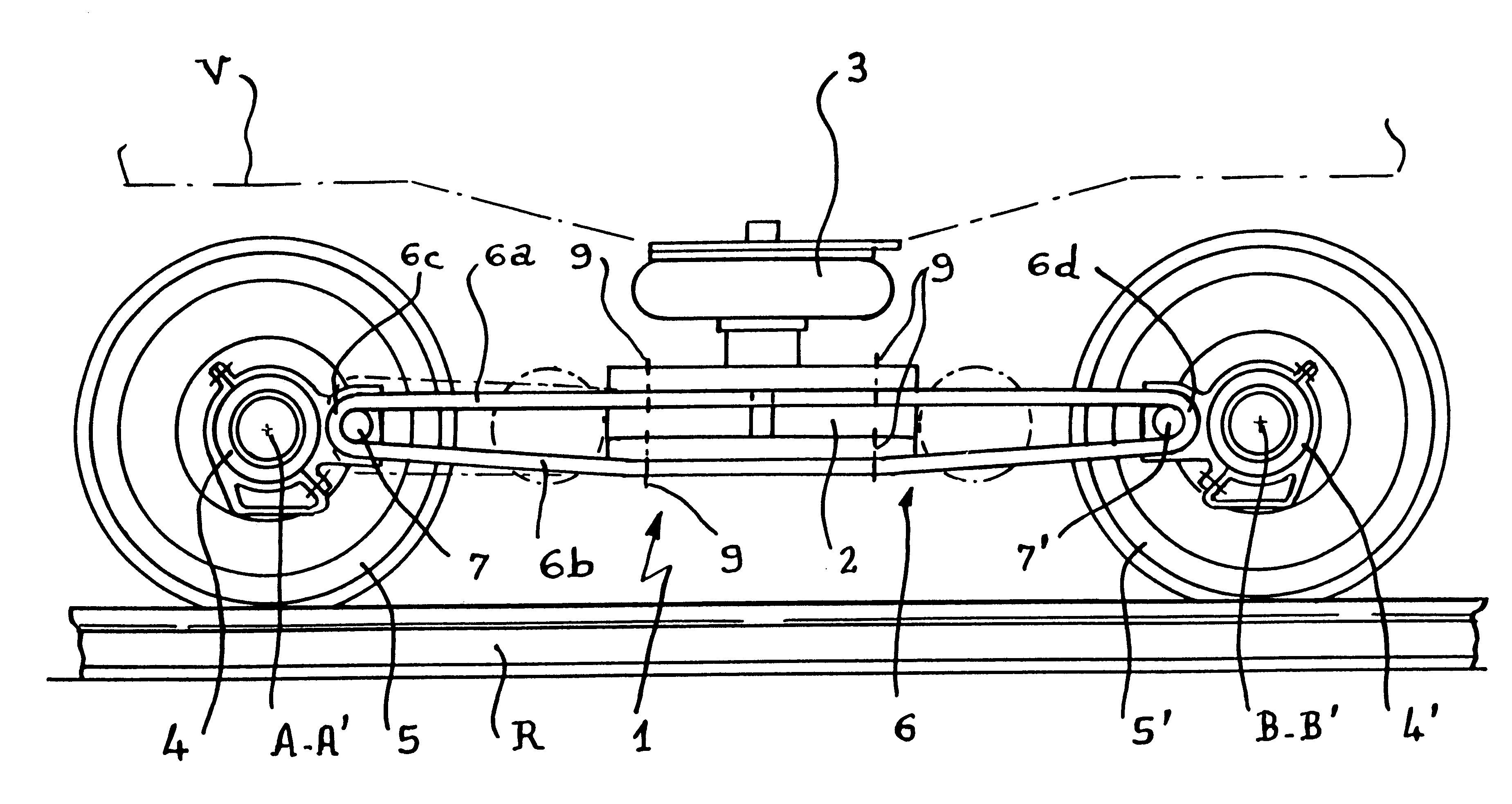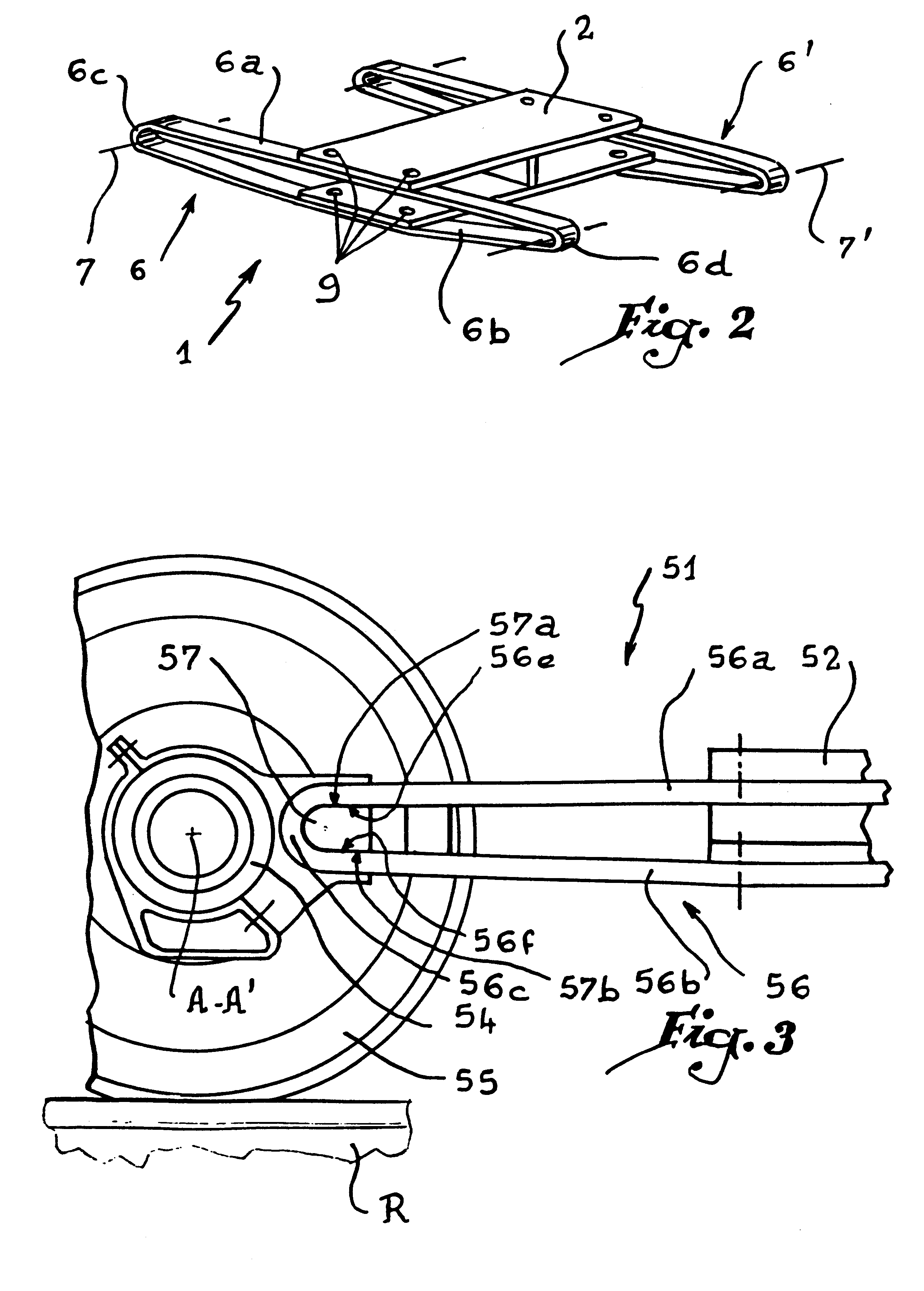Railway vehicle bogie and process for manufacturing a side member of such a bogie
a technology for rail vehicles and side parts, which is applied in the direction of axle-box mounting, rail engagement elements, transportation and packaging, etc., can solve the problems of not enabling forces, not allowing the assembly of accessories or safety elements, and efficiently absorbing
- Summary
- Abstract
- Description
- Claims
- Application Information
AI Technical Summary
Benefits of technology
Problems solved by technology
Method used
Image
Examples
second embodiment
In the invention shown in FIGS. 3 and 4, elements similar to those of the embodiment of FIGS. 1 and 2 bear identical references increased by 50. In this embodiment, a bogie 51 comprises a chassis 52 supporting a suspension assembly (not shown), while side members, of which only one, referenced 56, is visible in FIGS. 3 and 4, are taut between the chassis 2 and the axle boxes, of which only one, referenced 54, is visible, this axle box defining an axis of rotation A-A' of wheels 55.
The side member 56 is made of spring steel and comprises an upper web or tie 56a and a lower web or tie 56b connected by two curved zones, of which only one, referenced 56c, is visible. The curved zone is disposed around a projecting part 57 of the axle box 54 on which it is mechanically fixed. More precisely, the projecting part 57 is in the form of a heel and comprises an upper surface 57a and a lower surface 57b which are substantially plane, against which corresponding surfaces 56e and 56f belonging re...
first embodiment
A damper such as an elastomer block might, of course, also be used with the device of the invention shown in FIGS. 1 and 2. Similarly, the geometry of the heel 57 is transposable with a bogie made of composite material.
Manufacture of a side member made of composite material, particularly of the type shown in FIGS. 1 and 2, is described with reference to FIGS. 5 and 6.
Two studs 101 and 102 are mounted on a plate 103 and their distance E is adjusted as a function of the dimensions desired for the side member to be manufactured. When this distance has been adjusted, a continuous lap 104 of glass fibers is wound around these two studs 101 and 102 over at least one turn, preferably over a large number of turns so as to constitute a closed loop 105. This loop is resistant from the mechanical standpoint, as the reinforcing fibers extend over the whole length of the loop. When several turns have been made, as shown in FIG. 6, it is possible to dispose the assembly thus formed inside an oven...
PUM
 Login to View More
Login to View More Abstract
Description
Claims
Application Information
 Login to View More
Login to View More - R&D
- Intellectual Property
- Life Sciences
- Materials
- Tech Scout
- Unparalleled Data Quality
- Higher Quality Content
- 60% Fewer Hallucinations
Browse by: Latest US Patents, China's latest patents, Technical Efficacy Thesaurus, Application Domain, Technology Topic, Popular Technical Reports.
© 2025 PatSnap. All rights reserved.Legal|Privacy policy|Modern Slavery Act Transparency Statement|Sitemap|About US| Contact US: help@patsnap.com



